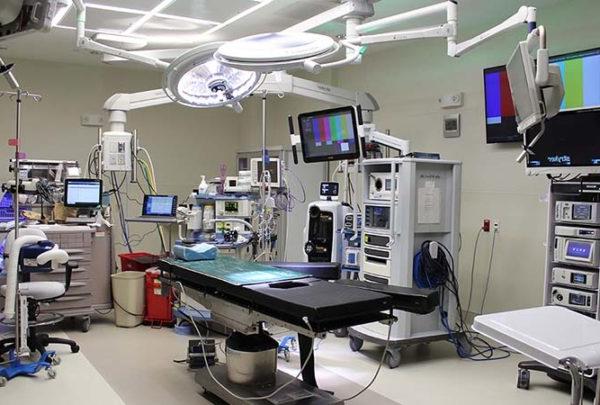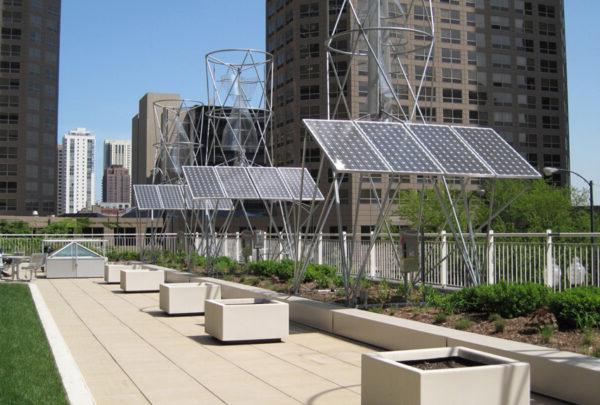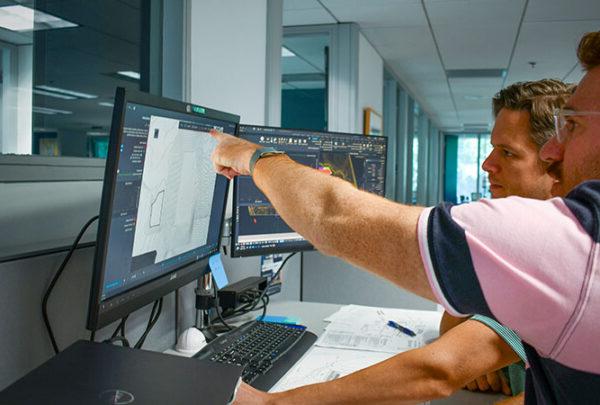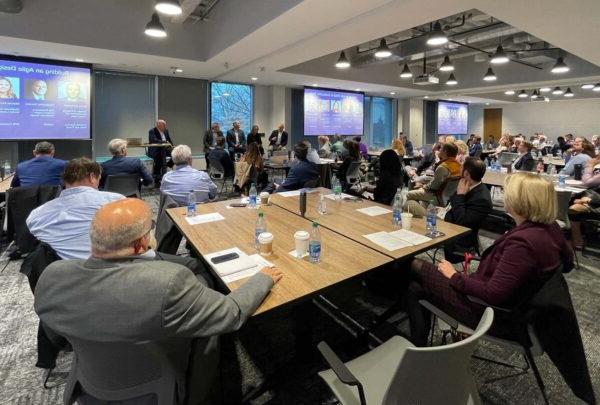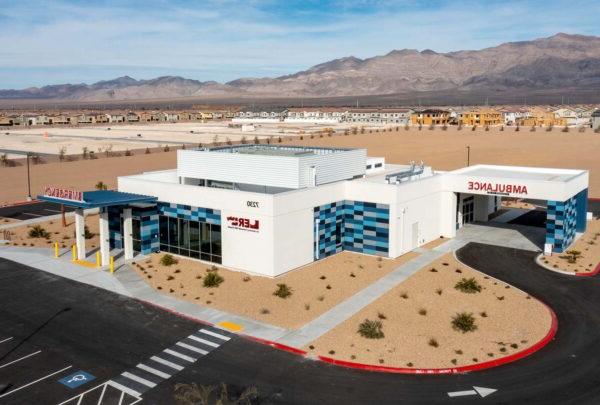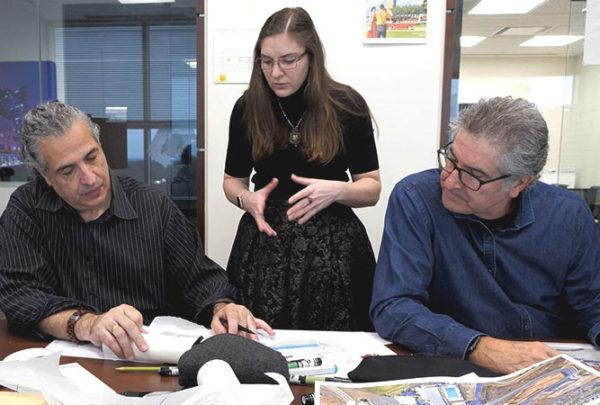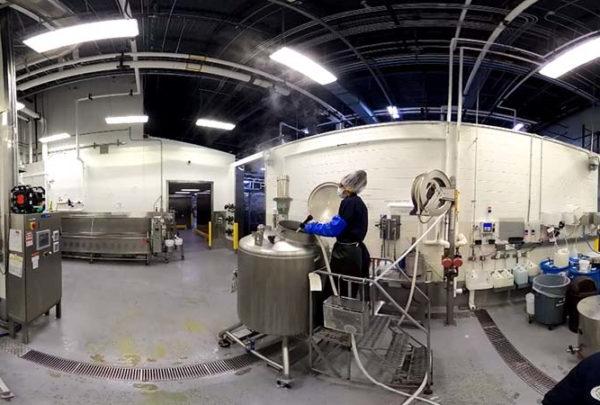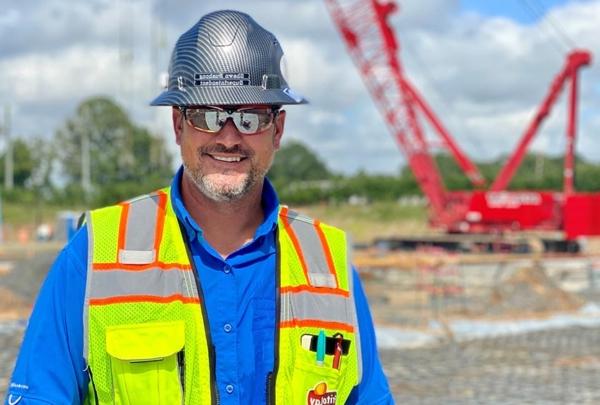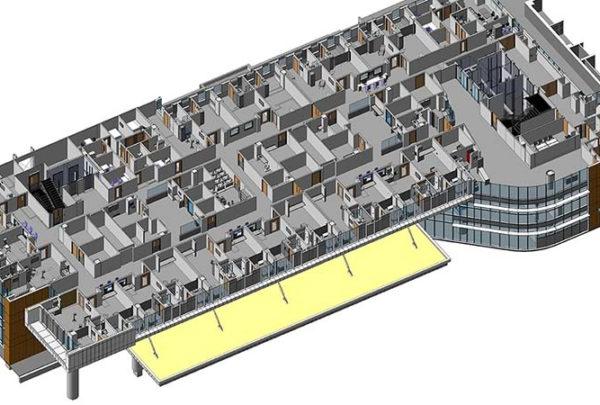The effects of climate change on healthcare and the effects of healthcare on climate change are inextricably linked. At the same time, health systems are being forced to harden against the frequency and severity of weather events, they must also seek solutions to curtail their significant carbon emissions.
The importance of achieving each of these goals grows by the day. Extreme weather and health crises caused by climate change are increasing in frequency and severity. Concurrently, the U.S. health sector is responsible for an estimated 8.5% of national carbon emissions, the highest rate among industrialized countries.
Sustainable Solutions You Can Trust
With 127 Sustainability Certified projects to its credit, 澳门足彩app’s team of more than 100 Accredited Professionals and our sustainability-experienced design and construction personnel work collaboratively to ensure your sustainability goals are met and exceeded. Utilizing cutting-edge technologies, tools and knowledge, our teams develop and implement efficient and cost-effective strategies to minimize a project’s environmental impact within budget.
Hospital systems are being urged to reduce emissions by 50% by 2030, reach net zero by 2050, including supply chain emissions, and publicly report on their progress. Industry leaders have said they expect the forthcoming regulatory changes could link Medicare and Medicaid reimbursements to health systems’ energy efficiency, just as the Affordable Care Act tied reimbursements to patient outcomes and patient satisfaction.
As the industry searches for solutions, 澳门足彩app Healthcare’s consultants, designers and construction professionals often discuss clients’ environmental challenges and goals. After many conversations, they have found that a necessary first step is defining the relevant terminology and understanding when it does and doesn’t overlap.
Step 1: Defining the Terms
It is essential to understand four main terms, each of which is critical in healthcare settings:
- Resiliency in the design, construction and operation of facilities refers to the ability to withstand disruptions and continue functioning effectively. This can include events caused by natural disasters, power outages, equipment failures, or other unexpected events. A resilient facility can quickly recover from disruptions and maintain a high level of performance.
- Sustainability addresses the ability of a system or process to be maintained or sustained over time without depleting resources or causing negative environmental impacts. In other words, it is about balancing economic, social, and environmental considerations to create a system that can continue to thrive in the long term.
- Decarbonization refers to the process of reducing the amount of carbon dioxide (CO2) in the atmosphere. CO2 is a greenhouse gas that contributes to global warming and climate change. Decarbonization often involves reducing the use of fossil fuels, a significant source of CO2 emissions, and increasing the use of renewable energy sources that do not produce CO2 when used.
- Net zero indicates balancing the amount of greenhouse gases (GHGs) emitted into the atmosphere with an equivalent amount of GHGs removed from the atmosphere. The goal of achieving net zero GHG emissions is to stabilize the concentration of GHGs in the atmosphere and limit the extent of climate change.
“We need to level-set at the beginning,” said Kevin Meek, 澳门足彩app Vice President of Advisory Services. “In my experience, in healthcare, the term sustainability is used, and people think, ‘How do we respond when a hurricane rolls in? I need to make sure we've got generators and provisions.’ No. That’s resiliency.
“I think we can help by delineating which conversation we're having. There is the resiliency conversation. Then there's sustainability, and then there’s the reduction process. We need to work with the project owner so that everyone understands the goal. The approach to each of those can be drastically different.”
While each is a distinct concept, they can also be viewed as complementary and can relate functionally to the others. Accordingly, healthcare facilities can be designed and constructed to meet resiliency, sustainability and decarbonization goals.
The Intersection of Building Goals
This is particularly true in the case of energy consumption and efficiency. Maintaining habitability during an interruption of a facility’s energy supply is a fundamental aspect of resiliency, and a National Resources Defense Council report states that the main tools needed to accomplish decarbonization are also keys to habitability.
- Reducing heat loss and gain by improving the building envelope.
- Using high-efficiency electric heat pumps for space and water heating (which are cheaper to install and operate and work better if the envelope is tight.
- Storing energy by pre-heating or pre-cooling water and buildings themselves.
- Enabling demand flexibility for appliances, often automated and controlled via the Internet to reduce energy use when the grid is dirty.
- Considering peak conditions rather than usual design conditions to keep the costs of decarbonization low and reliability high.
- Adding solar Photovoltaic (PV) system to the building. PV is useful for decarbonization and often even more valuable for habitability. Also, providing battery storage for PV reduces reliance on the grid during interruptions.
- Purchasing green power or tying into local/community solar or microgrids.
- Commissioning of energy and water systems and the building envelope to verify the building's operation according to the design intent.
Other areas of intersection include:
- Climate Risk Assessment: Determining potential risks from climate change, including rising temperatures and an increase in natural disasters, such as hurricanes, storm surges, droughts and wildfires, and developing design solutions intended to address these risks.
- Site Location: The location of healthcare facilities is critical. In addition to locating facilities to maximize access to the local communities and reduce critical/emergency transportation times, facilities should be located away from flood zones and oriented to benefit daylighting and energy efficiency opportunities.
- Water conservation: Healthcare facilities can also be designed to conserve water using low-flow plumbing fixtures, greywater systems and rainwater harvesting that takes advantage of naturally occurring conditions to reduce the facility's water consumption and the burden on local water resources.
- Materials selection: Sustainable sourcing, such as choosing durable, low-maintenance, and locally sourced materials, can help reduce the facility’s environmental impact. Using recycled materials or materials with a high percentage of recycled content can also help the drive toward net zero. Selecting materials with low volatile organic compounds (VOCs) improves the air quality of the indoor environment, reducing health-related issues associated with the building itself.
Finding Environmentally Sound Solutions
“Coming out of the COVID era and hearing about budget pinches, health systems want a resilient building. They want a versatile building,” said Bryan Smith, Director of Engineering in Healthcare Design. “They want flexibility to accommodate all sorts of different scenarios. But they have to do it within budget constraints.”
There are no blanket solutions. Each geographic location is unique, as is each facility. Designated by Engineering News-Record (ENR) as a top green design and construction firm, 澳门足彩app has partnered with health systems across the country to address wide-ranging resilience and environmental goals.
“We have done alternate energy,” Smith said. “We have done rainwater capture. We’ve addressed resiliency with different selections of equipment and configurations. With owners trying to implement it on an existing fleet, every situation is very different, and that’s before you get into coastal applications versus mountain applications.
“People want a resilient building. They want a versatile building. They want flexibility to accommodate all kinds of different scenarios. We work with them, to reach resiliency and sustainability measures that are functional and cost-effective.”
Contact 澳门足彩app Healthcare to discuss realistic strategies for addressing your health system’s environmental goals.







